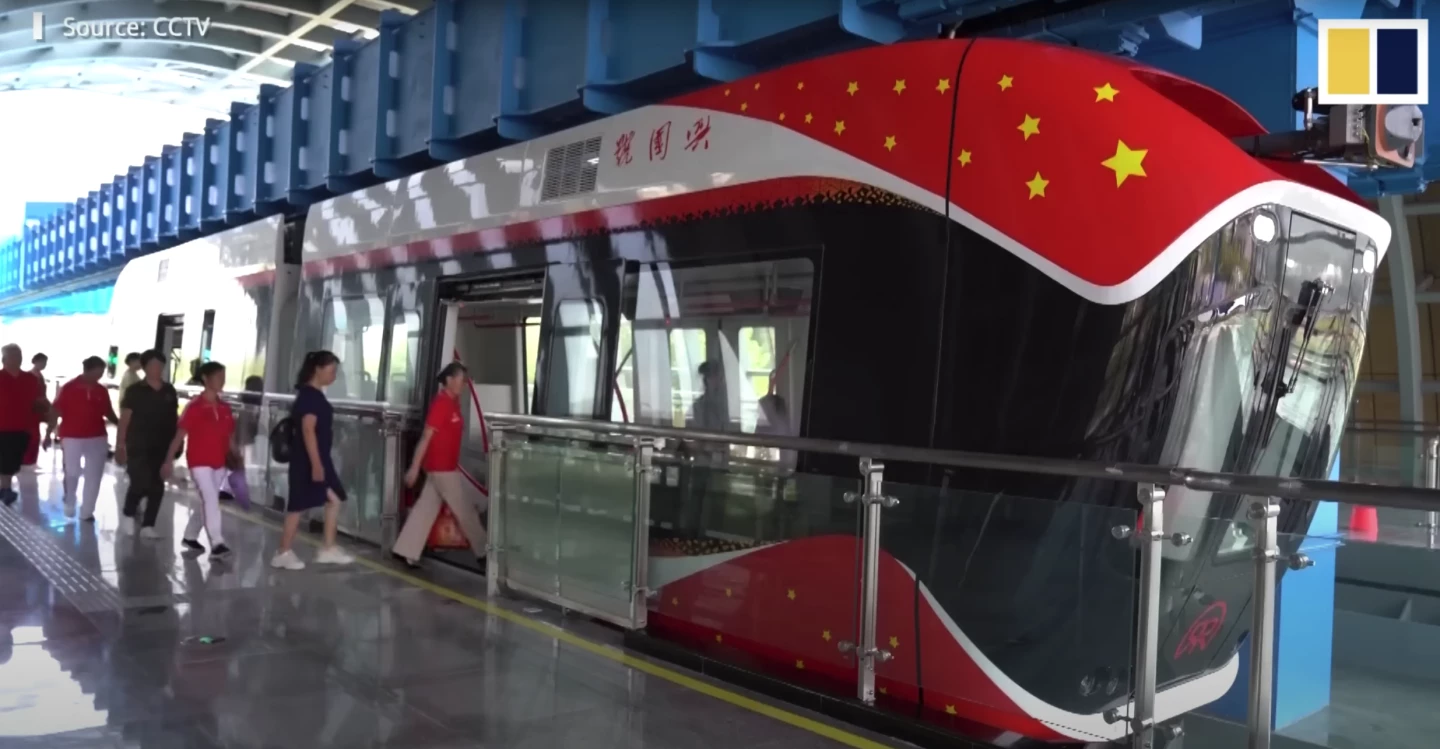A new Sky Train test track in Southern China has debuted the world's first maglev transit system built using permanent magnets instead of electromagnets. It's capable of keeping its underslung carriages suspended indefinitely without a power supply.
The benefits of maglev public transport systems are fairly clear: they're nearly silent, they need little maintenance, and they eliminate rolling resistance, so they use less energy to accelerate. On the other hand, they don't show up in slow-speed transit services all that often, since the energy used to levitate a conventional maglev train adds somewhere around 15% to the overall energy bill at suburban speeds, as compared to a subway or light rail.
That's only if you use electromagnets, though. Permanent magnets deliver their magnetic forces 24/7, for free – well, provided you can afford the rare earth metals needed to make them permanent magnets in the first place. China has nearly 40% of the entire world's known reserves of rare earth elements – twice as much as its neighbor Vietnam in second place. It also mines far more of these metals than any other country, and it absolutely dominates the processing and supply chain – just six state-run Chinese companies produced 85% of the world's refined rare earths in 2020.
All this is to say that the experimental Sky Train unveiled last week in Xingguo county, Jiangxi province, looks very much like an "only in China" proposition.

At present, it's just an 800-meter (half-mile) single test track, built on steel poles that lift the track some 10 m (33 ft) in the air. A two-carriage train carrying up to a gratuitously lucky 88 passengers is suspended magnetically underneath the track, making no contact, and it glides along, silent and frictionless, between elevated passenger platforms at speeds up to 80 km/h (50 mph). Once test runs are finished, it'll be extended to a 7.5-km (4.7-mile) track, with a higher top speed around 120 km/h (75 mph).
Obviously, being raised up on poles, it requires less real estate on the ground than a light rail operation, and according to the South China Morning Post, these Sky Trains cost about a tenth of what a subway does – even accounting for the large amounts of neodymium involved. They'll certainly age well on the balance sheet, too – a neodymium-enhanced magnet loses less than 5% of its magnetism in a century, so these facilities could outlast filial piety.
Take a look in the video below.
Source: South China Morning Post






